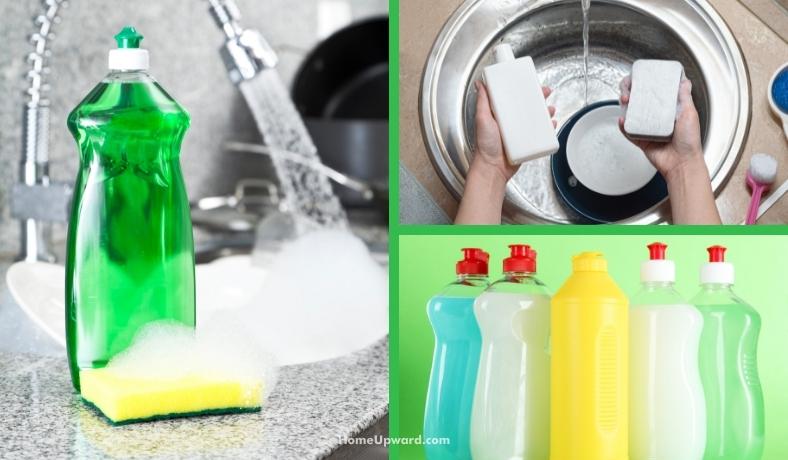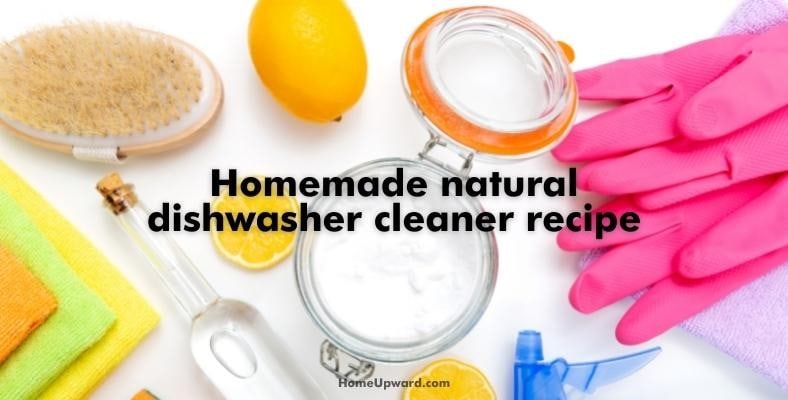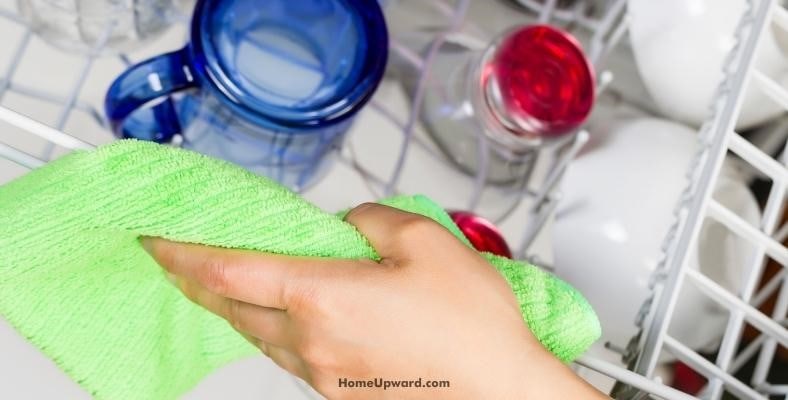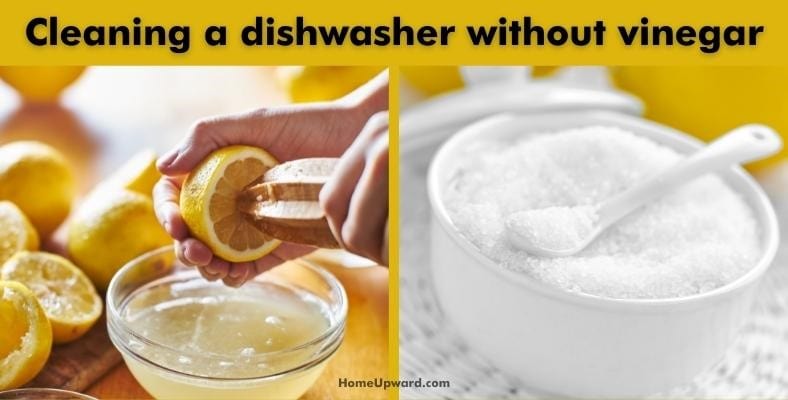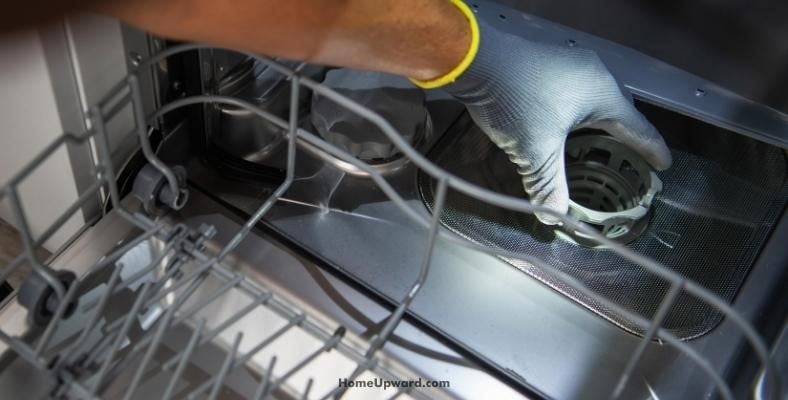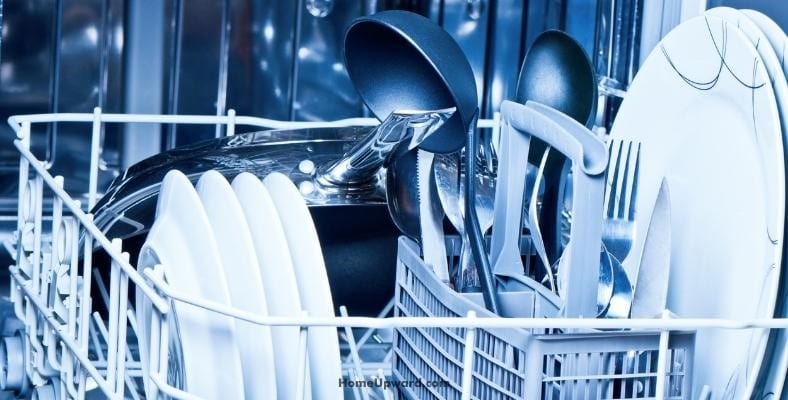Contents
Homemade Natural Dishwasher Cleaner Recipe
To clean your dishwasher at home you’ll only need a handful of ingredients and supplies. This DIY dishwasher detergent recipe can refresh your machine and break down soap scum left by dishwasher pods or rinse aids.
It does this through the natural properties of a wonderful everyday household acid such as vinegar. What great about vinegar is that it has natural antimicrobial properties, meaning that the acetic acid in it can break down germs before they have a chance to get on your dishes, food, and tongue.
Likewise, baking soda can help cut through limestone buildup from hard water. We’ll use both of them to get a great homemade natural dishwasher cleaner that works great.
To make your own you’ll need:
- Distilled white vinegar
- Baking soda
- Multi-purpose household cleaner
- A bit of tap or distilled water, as needed to help fill your container
- Stainless steel polish (optional, if applicable)
Once you’ve got the ingredients together, mix them (except for the stainless steel polish, that’s for separate use) in a container such as a cup or a mug using a stick or spoon.
Cleaning Your Dishwasher With a DIY Dishwasher Detergent
Now that you’ve made your own homemade dishwasher cleaner, follow these steps to successfully clean your dishwasher.
1. Remove All the Dishes
To begin cleaning your dishwasher, you need to remove all dishes from the inside.
While some commercial cleaners may advise using them in a full dishwasher, removing all of the dishes before cleaning ensures that the racks and interior of the dishwasher are thoroughly disinfected.
2. Clean Out Food Particles
Bits of food stuck to the interior of the tub, the racks, and the door can all get in the way of properly cleaning out your dishwasher. Using either water or a multi-purpose cleaner, get all visible food particles cleared away before proceeding.
This will give the vinegar and baking soda the greatest surface area to work on. If any spots are particularly stubborn you can use hot water to soften debris before wiping it out with a paper towel.
3. Wipe and Clean the Door Seal
Often forgotten during the cleaning process is the door seal of the dishwasher. That piece of hardware is an ideal place for food particles and leftover water to collect.
Be sure to clean the door seal off thoroughly to avoid risking mildew or rot. Wipe it down as needed or scrub with a soft brush.
You can also use a soft cloth or microfiber towel to wipe and rub with your homemade cleaning solution.
4. Remove and Clean the Filter
A blocked filter may be what brought you to this guide in the first place. Every bit of food, sauce, grit, and water passes through that filter on its way to the drain.
Over time the filter will get clogged with bits of waste from your dishes. When your dishwasher smells bad or isn’t cleaning well it may be because the filter needs to be cleaned out.
Otherwise clean dishes may appear cloudy, have spots, or even have visible food debris clinging to them. Yuck!
To clean the filter:
- Remove it from the bottom of the dishwasher.
- Tap it over the trash or your garbage disposal to free the physical debris.
- Gently wash the filter in hot, soapy water.
If washing the filter fails to clean it thoroughly, soak it in a half-and-half vinegar solution and water for thirty minutes.
5. Use a Hot Dishwasher Cycle With Vinegar
Pour a cup of vinegar into the bottom of the dishwasher. You can add essential oil to the vinegar before pouring it in as an optional step.
Peppermint, lemongrass, and grapefruit are all scents that can freshen up your kitchen while also providing a cleansing boost. When you’re ready, run the dishwasher on the hottest cycle.
6. Run a Short Wash Cycle With Baking Soda
Once the vinegar cycle is done you may be tempted to declare the dishwasher pristine. But it’s vital for proper maintenance that you run one more cycle.
Sprinkle a cup of baking soda in the bottom of the dishwasher then run a short wash cycle. This will help clear away stains and leave you with an odor-free, beautiful dishwasher.
7. Cleaning the Dishwasher’s Outside Surfaces
Now that you’ve put in the effort to clean the interior, make sure also to clean the outside to match. Use a multi-purpose household cleaner to clean the buttons and handle, removing any oils and grimes that may have accumulated over time.
Cleaning a Dishwasher Without Vinegar
What if you don’t have vinegar on hand or don’t like the smell? Not to worry – there are other options for natural, gentle cleansers you can use.
- Lemon juice is another household acid capable of killing germs. Rather than the acetic acid in vinegar, lemon juice has high concentrations of citric acid.
- Citric acid powder can also be purchased on its own and has uses from the kitchen to the laundry machine to the bathroom as a powerful, natural cleaner.
Either one can be used as a substitute for vinegar in the above recipe.
How Often Should You Clean a Dishwasher?
Dishwashers need a deep clean at least twice a year.
In reality, anytime you begin to notice odors or underperformance from your dishwasher it’s time to freshen it up with a clean inside and out.
Tips on Getting Rid of Hard Water Buildup
Limestone and other hard water build ups can reduce the lifetime of your dishwasher. Regularly flush your dishwasher with vinegar to get rid of hard water buildup.
Regular use of acidic cleaners will break down the deposits left behind by hard water.
If the natural dishwasher cleaner recipe doesn’t seem to help with hard water residue, consider swapping the baking soda for washing soda. Washing soda, known as soda ash, can also help cut through soap scum.
Can You Clean Your Dishwasher With Bleach?
The dishwasher’s interior can be disinfected with bleach but only if it is not made of stainless steel because bleach will deface stainless steel.
If you can do so, you can clean your dishwasher with bleach by pouring about a cup into the bottom and running a normal cycle. If ever in doubt, you can consult your owner’s manual or manufacturer’s website to double-check what is safe for your appliance.

